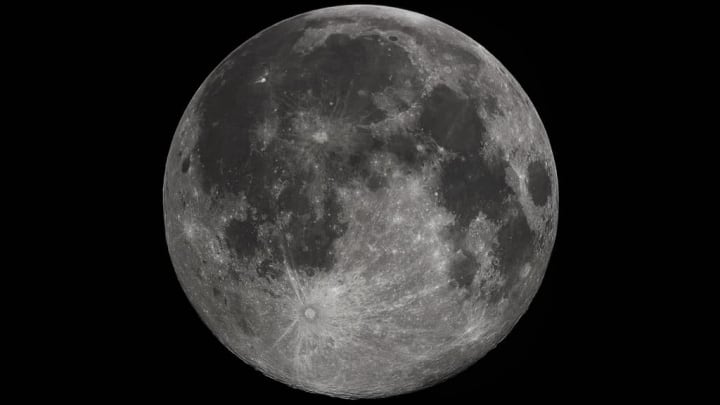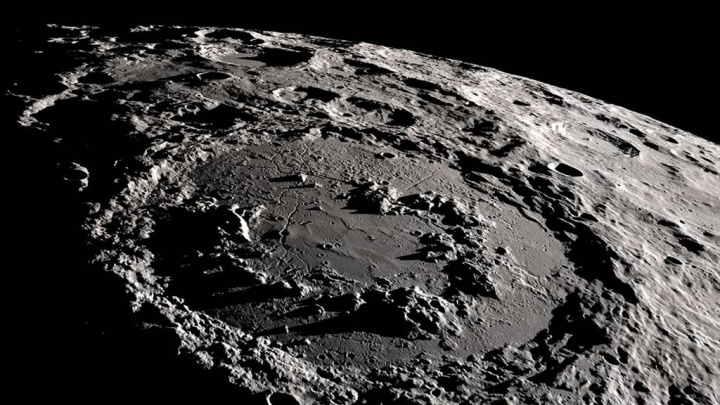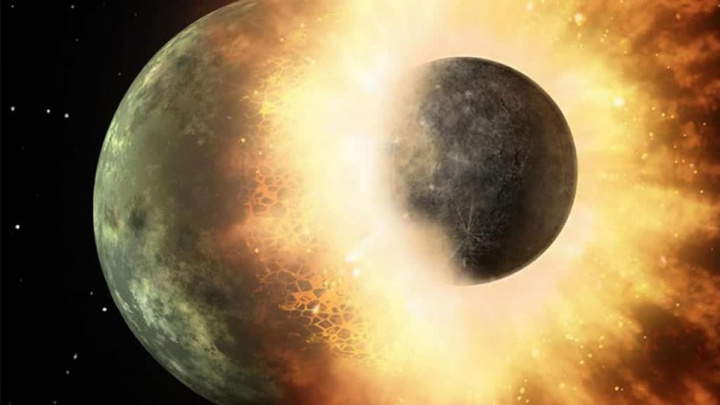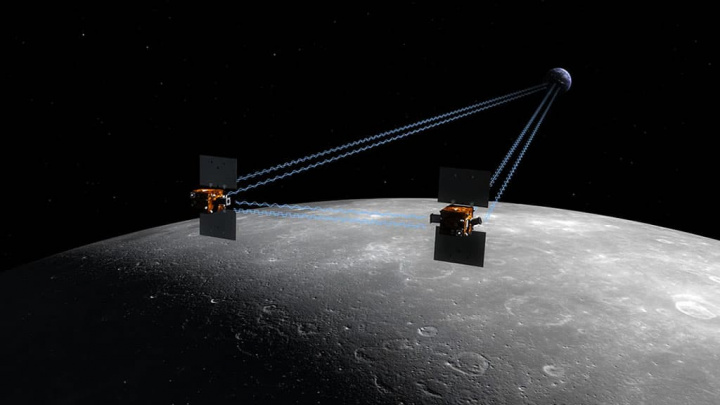
It is our natural satellite, the only star, beyond Earth, that man has ever stepped on, but not much is known about the Moon. However, taking into account that we will soon be returning there, further investigations never to the lunar soil. Thus, it has now been discovered that the Moon’s subsurface may be richer in metals, such as iron and titanium, than researchers thought.
This discovery could in fact be a surprise and change the way the Moon is seen in the future of humanity.

After all, is it more metal than ice on the moon?
What started as an ice hunt hidden in the lunar polar craters has turned into an unexpected discovery. This surprise may help to clarify a “muddy” story about the formation of the Moon.
Team members of the Mini-RF (Miniature Radio Frequency) instrument on NASA's LRO (Lunar Reconnaissance Orbiter) probe found new evidence that the Moon's subsurface may be richer in metals, such as iron and titanium, than researchers thought . This discovery, published in Earth and Planetary Science Letters, may help to establish a clearer connection between the Earth and the Moon.
The LRO mission and its radar instrument continue to surprise us with new ideas about the origins and complexity of our closest neighbor.
Explained Wes Patterson, principal investigator for the Mini-RF at the Johns Hopkins University Applied Physics Laboratory in Laurel.

The Moon may not have been born as thought
Substantial evidence points to the Moon as the product of a collision between a protoplanet the size of Mars and the young Earth, forming from the gravitational collapse of the remaining cloud of debris. Consequently, the chemical composition of the Moon resembles that of Earth.
However, looking at the chemical composition of the Moon in detail, this story becomes less clear. For example, in the bright plains on the Moon's surface, called lunar highlands, rocks contain smaller amounts of minerals containing metals compared to Earth.
This discovery could be explained if the Earth had completely differentiated into a core, mantle and crust before impact, leaving the Moon largely poor in metals. However, when we look at the lunar seas - the large, darkest plains - the abundance of metals becomes richer than many rocks on Earth.
Thus, this discrepancy intrigued scientists, leading to numerous questions and hypotheses about how impactful the protoplanet's contribution to differences may have been. The Mini-RF team found a curious pattern that could lead to an answer.

Measure the electrical capacity of the lunar soil
Using Mini-RF, the researchers sought to measure an electrical property in the lunar soil stacked on the floor of craters in the northern hemisphere of the Moon. This electrical property is known as the dielectric constant, a number that compares the relative capacities of a material and the vacuum of the space to transmit electric fields, and can help locate ice hidden in the shadows of the craters.
However, the team noticed that this property increased with the size of the craters.
For craters approximately 2 to 5 km in diameter, the dielectric constant of the material constantly increased as the craters grew, but for craters 5 to 20 km in diameter, the property remained constant.
The discovery of this pattern opened the door to a new possibility. Since meteors that form larger craters also dig deeper into the Moon's subsurface, the team argued that the increasing dielectric constant of dust in the larger craters could be the result of meteors that excavate iron and titanium oxides below the surface. The dielectric properties are directly linked to the concentration of these metallic minerals.
If your hypothesis were correct, it would mean that only the first few hundred meters of the Moon's surface are scarce in iron and titanium oxides, but below the surface there is a steady rise to a rich and unexpected treasure.

NASA still makes surprising discoveries
By comparing radar images of the crater floor, obtained by the Mini-RF, with metal oxide maps from the LRO Wide-Angle Camera instrument, from the Japanese mission Kaguya and NASA's Lunar Prospector, the team found exactly what they suspected.
The larger craters, with their larger dielectric material, were also richer in metals, suggesting that more iron and titanium oxides had been excavated from depths of 0.5 to 2 km than from depths 0.2 to 0.5 km the lunar subsoil.
This exciting Mini-RF result shows that, even after 11 years of operation on the Moon, we are still making new discoveries about the ancient history of our closest neighbor.
The Mini-RF data is incredibly valuable and tells us more about the properties of the lunar surface, but we use this data to infer what happened more than 4.5 billion years ago!
Said Noah Petro, LRO project scientist at NASA's Goddard Space Flight Center in Greenbelt, Maryland.
These results follow recent evidence from NASA's GRAIL (Gravity Recovery and Interior Laboratory) mission, which suggests that a significant mass of dense material exists only a few tens to hundreds of kilometers below the enormous basin of the Moon's South-Aitken Pole, indicating that dense materials are not evenly distributed in the lunar subsoil.
Anxious for more discoveries, scientists have already started examining the crater floor in the southern hemisphere of the Moon. This way, they will be able to see if there are the same trends there.
